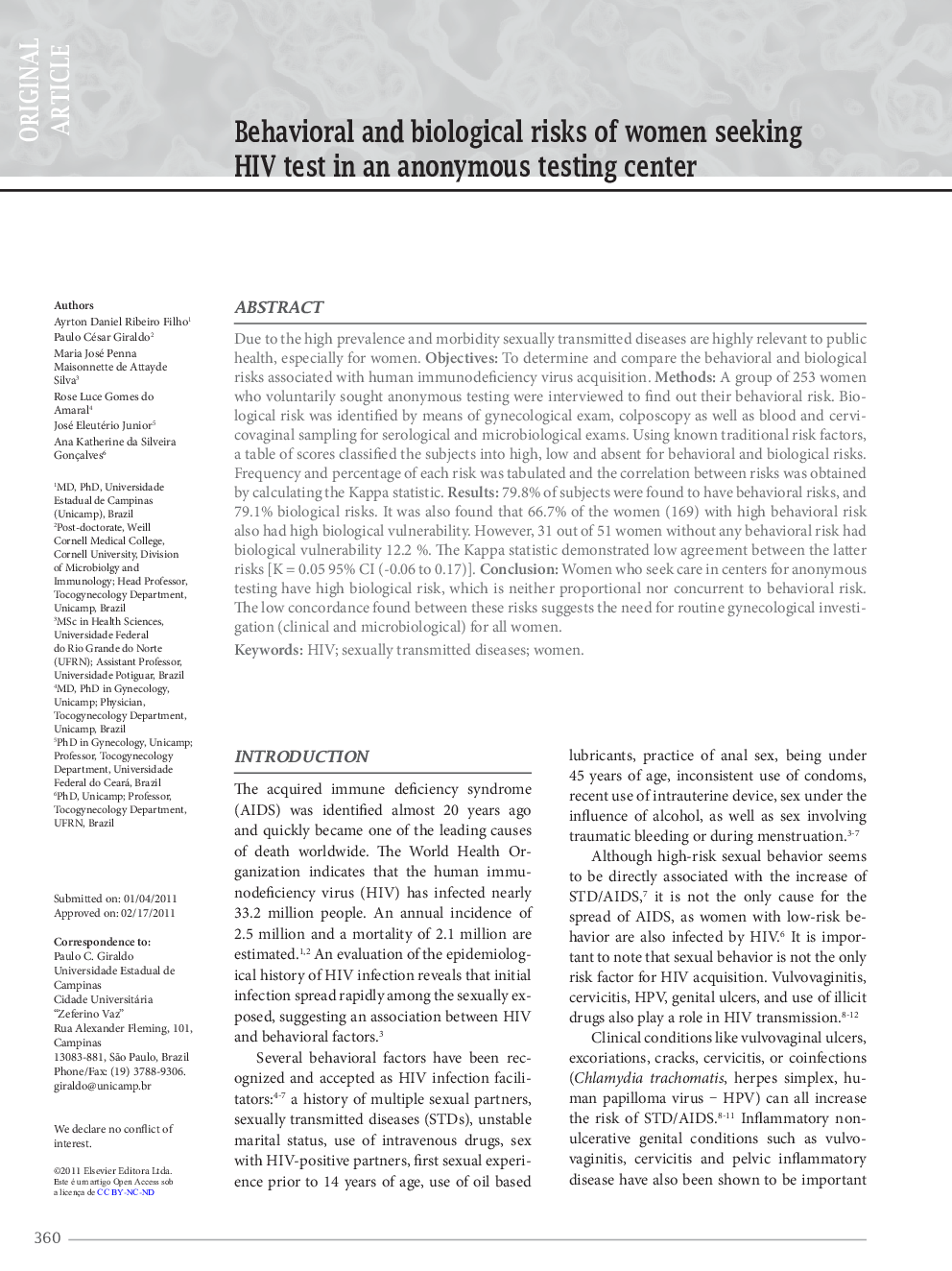| کد مقاله | کد نشریه | سال انتشار | مقاله انگلیسی | نسخه تمام متن |
|---|---|---|---|---|
| 3344516 | 1591213 | 2011 | 5 صفحه PDF | دانلود رایگان |

Due to the high prevalence and morbidity sexually transmitted diseases are highly relevant to public health, especially for women.ObjectivesTo determine and compare the behavioral and biological risks associated with human immunodeficiency virus acquisition.MethodsA group of 253 women who voluntarily sought anonymous testing were interviewed to find out their behavioral risk. Biological risk was identified by means of gynecological exam, colposcopy as well as blood and cervicovaginal sampling for serological and microbiological exams. Using known traditional risk factors, a table of scores classified the subjects into high, low and absent for behavioral and biological risks. Frequency and percentage of each risk was tabulated and the correlation between risks was obtained by calculating the Kappa statistic.Results79.8% of subjects were found to have behavioral risks, and 79.1% biological risks. It was also found that 66.7% of the women (169) with high behavioral risk also had high biological vulnerability. However, 31 out of 51 women without any behavioral risk had biological vulnerability 12.2%. The Kappa statistic demonstrated low agreement between the latter risks [K = 0.05 95% CI (−0.06 to 0.17)].ConclusionWomen who seek care in centers for anonymous testing have high biological risk, which is neither proportional nor concurrent to behavioral risk. The low concordance found between these risks suggests the need for routine gynecological investigation (clinical and microbiological) for all women.
Journal: The Brazilian Journal of Infectious Diseases - Volume 15, Issue 4, July–August 2011, Pages 360-364